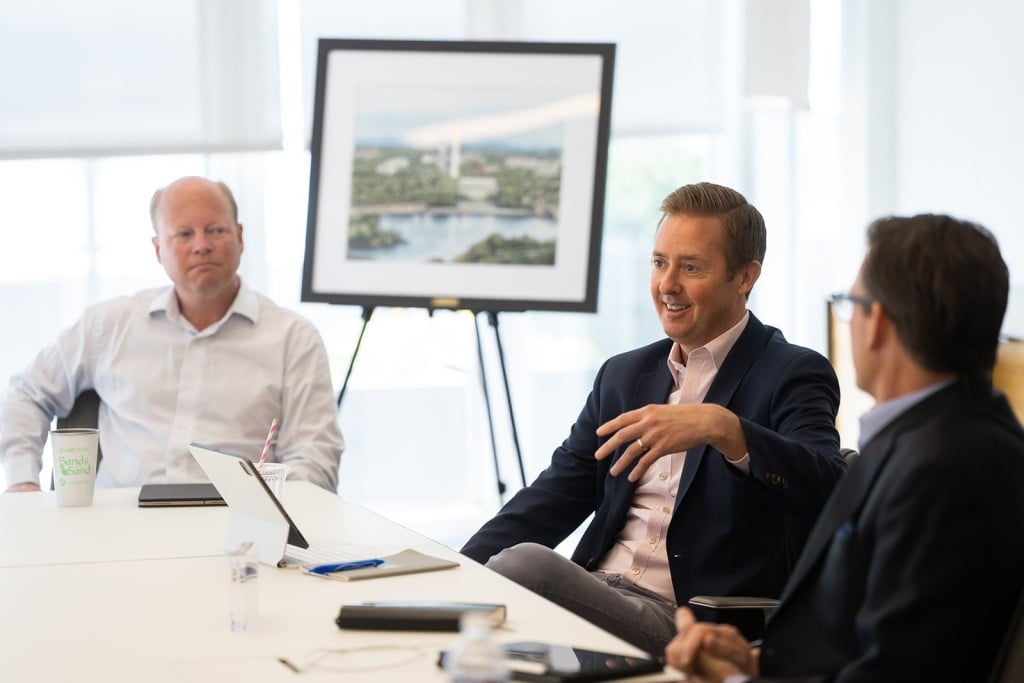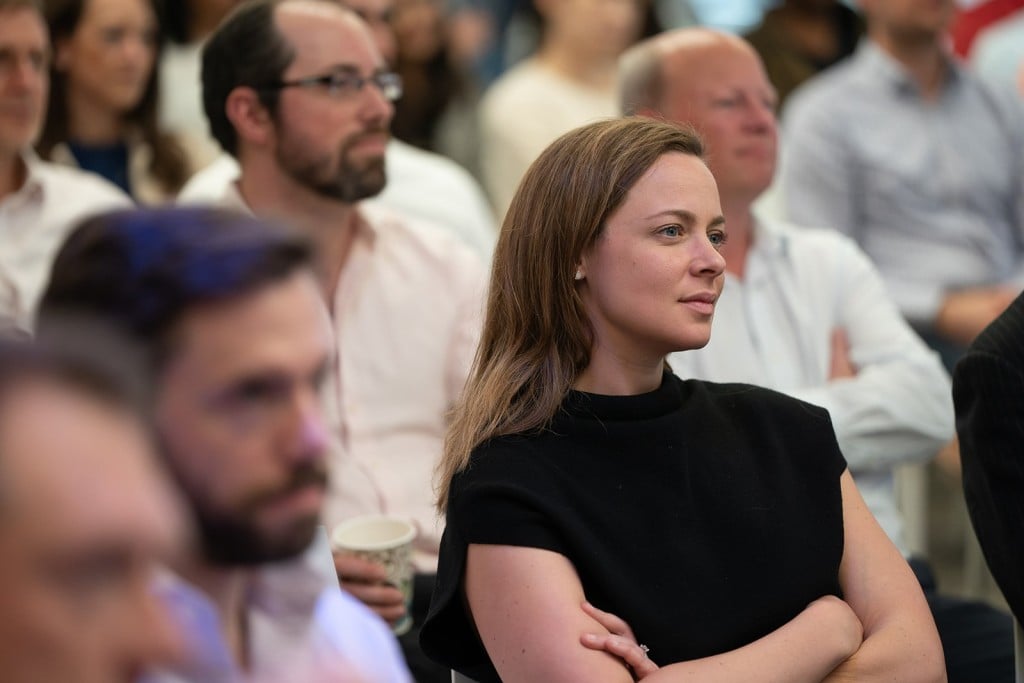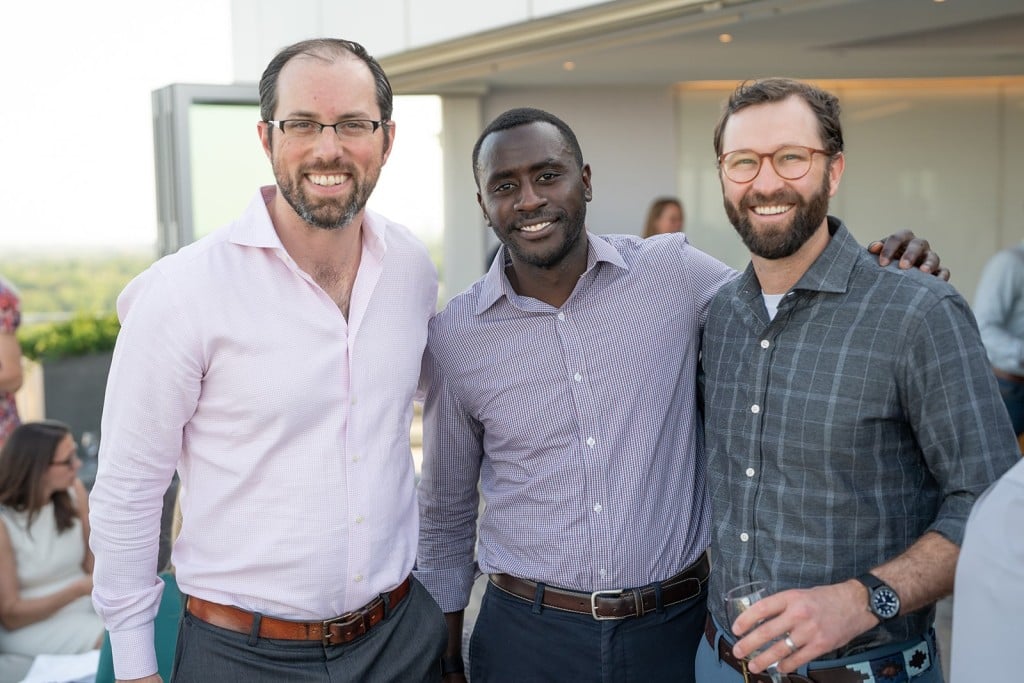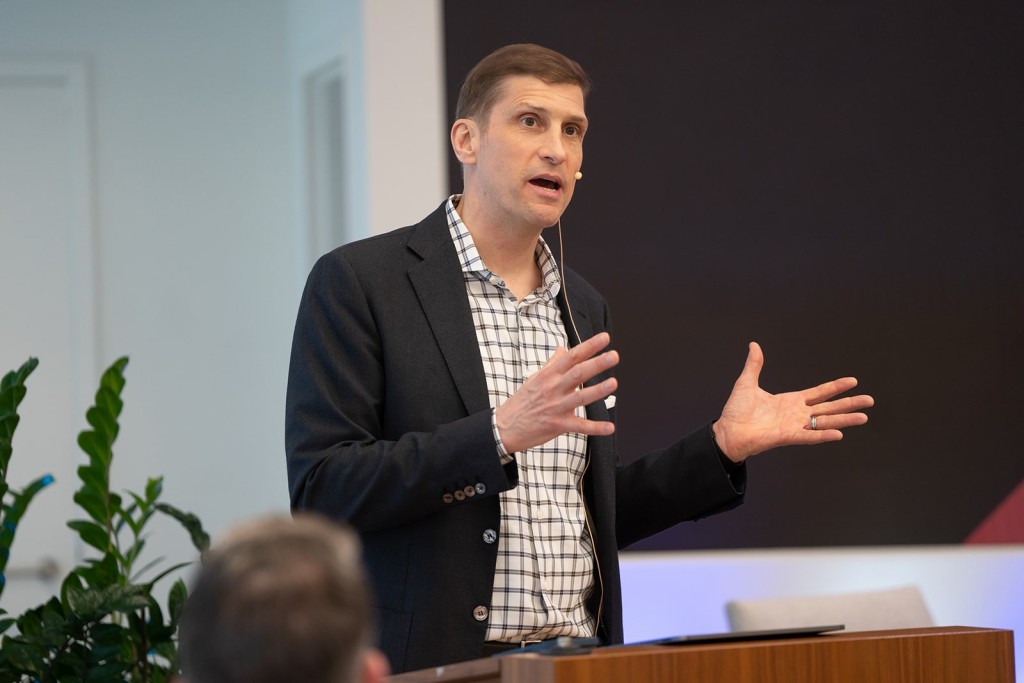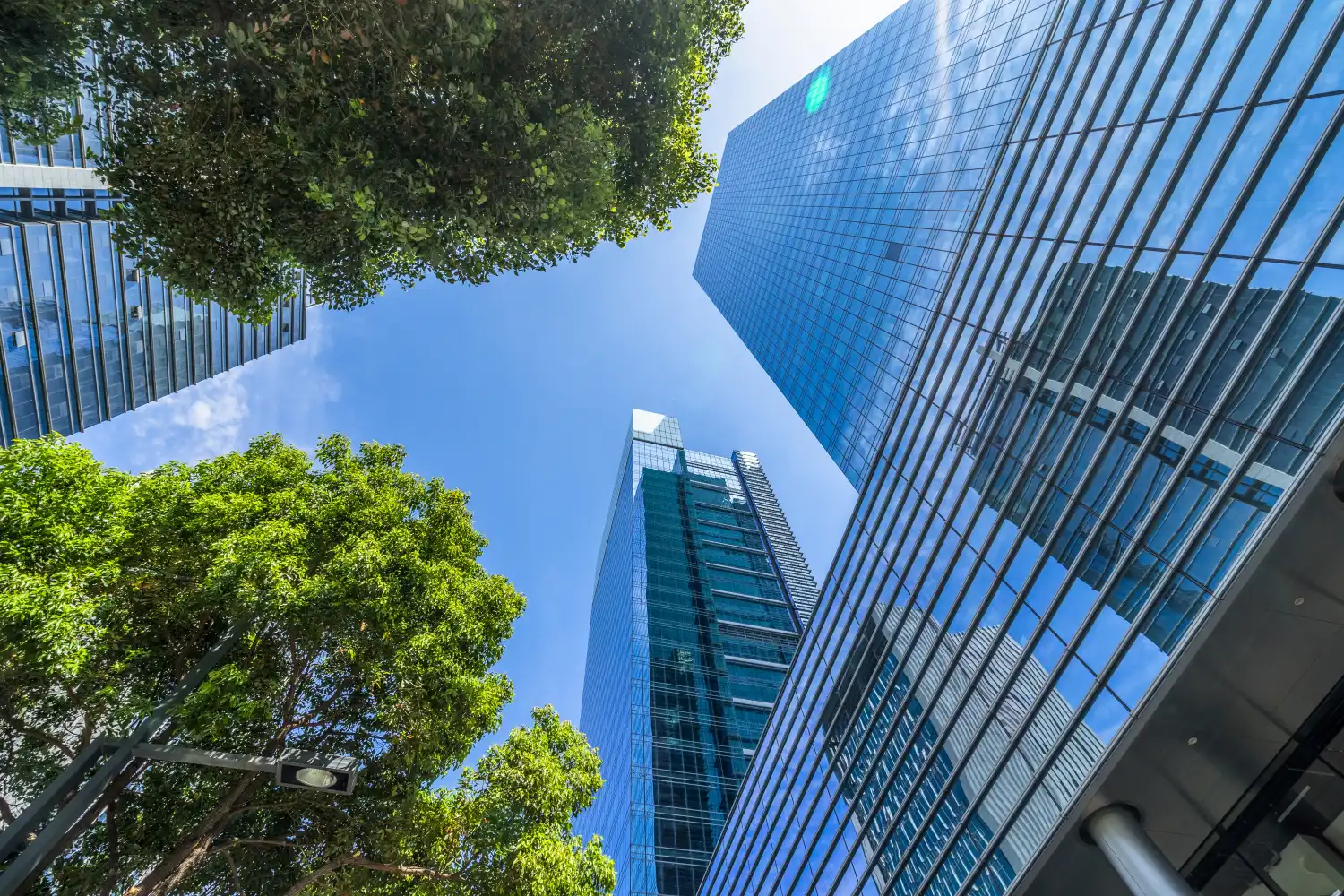Related Articles
Markets seem to underappreciate what we see as the significant improvements many of our portfolio businesses have made to their underlying fundamentals.
Key Points
- Earnings growth drove recent investment results for our portfolios.
- Waning competitive intensity and operational improvements are driving margin expansion among many of our businesses.
- Valuations remain fair, and in some cases attractive, despite this improving earnings picture.
In the dynamic landscape of global equity markets, we were encouraged to see resilience and growth in the first quarter of 2024. Against a backdrop of uncertainty tied to fast-changing geopolitical factors, investor confidence seemed to be underpinned by strong fundamentals. What encourages us the most are the underlying catalysts fueling the upward trajectory. We’ve observed robust earnings growth, a widening breadth of participation, and a notable decoupling of equities from the direction of interest rates. Remarkably, growth stocks defied many expectations by flourishing even in the face of elevated yields on the 10-year Treasury note.
Exhibit 1
FUNDAMENTALS DROVE THE MARKET IN 2024’S FIRST QUARTER
Interest rates didn’t dictate the market’s direction in the first quarter, unlike in most of 2022 and 2023. Russell 1000 Growth vs. 10-Year Treasury Yield. 12/31/21 - 3/31/24.
We would be remiss if we neglected to acknowledge the so-called Magnificent Seven, the group of leading technology companies whose performance serves as a barometer for the broader market. Contrary to the uniformity observed in 2023, when these constituents appeared to move in lockstep, the first quarter unveiled dispersion within the group.
Importantly, growing disparities in their fundamental outlooks drove the divergent trajectories.
This nuanced break underscores the direction and sustainability of earnings growth. That key component is what matters for long-term investors like us, and what is so often overlooked in the short term.
Exhibit 2
DIVERGING FORTUNES FOR THE MAGNIFICENT SEVEN
Improving fundamentals largely drove investment results for the Magnificent Seven in 2024’s first quarter.
Earnings power is ultimately what we care most about at Sands Capital, given our business owner’s approach to investing. We don’t necessarily dwell on the day-to-day or even quarter-to-quarter swings in the market. Instead, we focus on the 30 to 50 businesses that we own in each portfolio and the influences on their earnings power. The market’s seeming reorientation to micro from macro has begun to reward our fundamentally oriented approach. But there’s still a way to go, in our view. As we close the first quarter, we want to draw attention to the specific improvements in the underlying fundamentals of many portfolio businesses that the market may not yet fully appreciate.
One of the clearest ways we have found to highlight this fundamental improvement is through our exposure to unprofitable businesses. Exhibit 3 shows our Global Growth strategy’s exposure to loss-making businesses since 2021’s third quarter, and each of our portfolios has followed a similar trajectory. This decline isn’t window dressing; we haven’t simply swapped unprofitable businesses for profitable ones. Instead, many of the businesses we own have begun to report positive results, as competitive intensity has fallen, and operational improvements have yielded margin-boosting efficiencies. Importantly, this improvement in profitability hasn’t come at the expense of growth.
Exhibit 3
PORTION OF GLOBAL GROWTH'S PORTFOLIO WITH NEGATIVE EARNINGS YIELD
Our portfolios continue to feature higher earnings growth potential than their respective benchmarks.
Throughout 2022 as equities sold off globally, investors questioned the financial health of many of our high-conviction businesses. Unprofitable or barely profitable businesses were among our largest detractors from investment results. During that period, clients frequently asked why we continued to own these businesses, if they’d ever make money, and if they were broken growth stories. After re-underwriting all our businesses, we concluded that in most cases, their stocks had become disconnected from their fundamentals, that they were on a path to profitability, and that patience would ultimately be rewarded.
We aren’t claiming success, but we are encouraged by the progress these businesses have made in achieving profitability across our portfolios.
The fundamental improvement we’ve seen across our businesses—both profitable and unprofitable— has yielded attractive investment results across our strategies. These results have largely been driven by earnings growth, unlike the returns of the broader market, which have benefitted more from multiple expansion.
Exhibit 4
IMPROVING FUNDAMENTALS ARE DRIVING RECENT INVESTMENT RESULTS
Global Growth vs. MSCI ACWI. 1-Year Return Decomposition (3/31/23 – 3/31/24).
Real-world Examples
DoorDash—the market-leading food delivery platform in the United States—is a prime example of this fundamental improvement. While not yet profitable, its net margin has significantly grown over the past four years, and we expect continued expansion through at least 2028.
We believe three interconnected elements are driving the business’ margin inflection: falling competitive intensity, improving unit economics, and new product expansion.
Falling competitive intensity: DoorDash’s market share nearly doubled since 2019. The end of “free money” has driven rationalization, discouraging new entrants from entering the market and attracting customers through discounts and other perks. As competition has rationalized, the existing market leaders entrenched their positions, which we believe has made it even less appealing for new entrants.
Improving unit economics: Stronger competitive positioning has resulted in less of a need to discount or engage in aggressive marketing tactics, which has improved the bottom line. Meanwhile, order frequency and engagement with the DoorDash application has increased, and the infrastructure has also improved. More route density and better technology—leading to faster deliveries and fewer errors—have all contributed to making each order more profitable.
New products: DoorDash’s infrastructure improvements have narrowed the losses from new products. New products have helped drive order volumes and, in time, should also contribute to earnings, because they’re layered onto an existing infrastructure and thus come with high incremental margins. When we first purchased DoorDash, we didn’t view it merely as a food-delivery app, but as a local logistics network. We’re beginning to see that expectation play out, and the most recent example was the partnership announced with home-improvement retailer Lowe’s in early April. Exhibit 5 illustrates these improvements and their results.
Exhibit 5
CASE STUDY: DOORDASH
This story of underappreciated fundamental improvement isn’t unique to the United States. MercadoLibre—Brazil’s market-leading ecommerce provider—has also experienced a combination of falling competitive intensity and operational improvements. We estimate that MercadoLibre’s market share in Brazil has grown from 30 percent in 2021 to 40 percent in 2023, driven by a combination of its improving logistics services and the country’s high interest rates, which have crippled competitors.
This improved competitive position, along with a growing contribution from advertising revenue, has driven operating leverage. The business re-achieved profitability by GAAP standards in 2021. Between 2021 and 2023, its revenue doubled, and its operating income grew fourfold. From here, we expect revenue to grow threefold by 2029, with an over seven times increase in operating income.
This isn’t just a technology-related story. India’s HDFC Bank further extended its market leadership through last year’s merger with mortgage-lender Housing Development Finance, resulting in its holding 16 percent market share of India’s financial system, versus 11 percent pre-merger. While still smaller than the State Bank of India, HDFC Bank is India’s largest private-sector bank by market share and is two-to-three times larger across key operating metrics than its closest private-sector peer.
The merger gives HDFC Bank increased scale, extends its distribution footprint, and completes its product portfolio. The key benefits we expect to see from its stronger market position over the medium to long term include better funding, improved cross-sell opportunities, and operating leverage. Overall, it supports a lower cost of operation and structurally higher profitability than its peers, which is a source of competitive edge in banking in terms of pricing and customer franchise (acquisition, cross-selling, and retention.)
Financial Strength Underpins Earnings Potential
These fundamental improvements have bolstered the financial strength seen at the portfolio level. Financial strength is typically viewed as a defensive characteristic—especially in times of economic distress—but it can also underpin earnings potential. Relative to the broader market, our portfolios—as illustrated using Global Growth—tend to have net cash positions and higher structural margins, enabling investment to fortify their competitive moats and, in turn, long-term earnings potential.
Our businesses, on average, feature net cash positions and high structural margins. These characteristics help enable them to invest to fortify their competitive positions, resulting in higher long-term earnings potential.
Exhibit 6
FINANCIAL STRENGTH HELPS BUSINESSES CONTROL THEIR DESTINIES
Compelling Valuations
So why are these businesses underappreciated? One would think that improving fundamental outlooks on top of firm financial foundations would command premium valuations. However, our portfolios offer compelling valuations, given their earnings-led rise. In the case of Global Growth, the portfolio traded just modestly above the MSCI ACWI on a growth-adjusted basis at the end of the first quarter (Exhibit 7), despite significant earnings growth potential, durability, and financial strength.
At a company level, this valuation dynamic is even more apparent, with a significant portion of the portfolio trading at a lower forward price-to-earnings ratio (P/E) at the end of 2024’s first quarter than at the beginning of 2023.
Exhibit 7
GLOBAL GROWTH’S RELATIVE VALUATION IS COMPELLING
Global Growth vs. MSCI ACWI. P/E (NTM) to Exp. EPS Growth (STM) 12/31/08 – 3/31/24.
Appreciating the Underappreciated
Jim Grant, who founded Grant’s Interest Rate Observer, famously said “The key to successful investing is having everyone agree with you—later.” At Sands Capital, we have another saying that works well with Grant’s. We believe that “You must be there, not be getting there.”
In other words, active investors need to own the right businesses for their clients when the fundamentals and potential of these businesses are strong but before their stock prices fully reflect that potential. To do that, we have to see what the market is missing, which today are these underappreciated improving fundamentals.
Disclosures:

The views expressed are the opinion of Sands Capital and are not intended as a forecast, a guarantee of future results, investment recommendations or an offer to buy or sell any securities. The views expressed were current as of the date indicated and are subject to change. This material may contain forward-looking statements, which are subject to uncertainty and contingencies outside of Sands Capital’s control. should not place undue reliance upon these forward-looking statements. There is no guarantee that Sands Capital will meet its stated goals. Past performance is not indicative of future results. A company’s fundamentals or earnings growth is no guarantee that its share price will increase. GIPS Reports found here.
All investments are subject to market risk, including the possible loss of principal. International investments can be riskier than U.S. investments due to the adverse effects of currency exchange rates, differences in market structure and liquidity, as well as specific country, regional and economic developments. The strategy’s growth investing style may become out of favor, which may result in periods of underperformance. In addition, the strategy is concentrated in a limited number of holdings. As a result, poor performance by a single large holding of the strategy would adversely affect its performance more than if the strategy were invested in a larger number of companies.
Company logos and website images are used for illustrative purposes only and were obtained directly from the company websites. Company logos and website images are trademarks or registered trademarks of their respective owners and use of a logo does not imply any connection between Sands Capital and the company.
Global Growth takes an unconstrained approach to seeking the best growth businesses anywhere. With the research team free to scour all pockets of the world incubating new ideas, the Global Growth strategy taps into the power of sustainable competitive advantages in both developed and emerging markets.
The MSCI ACWI captures large- and mid-cap representation across 23 Developed Markets (DM) and 24 Emerging Markets (EM) countries. With 2,939 constituents, the index covers approximately 85% of the global investable equity opportunity set. DM countries include: Australia, Austria, Belgium, Canada, Denmark, Finland, France, Germany, Hong Kong, Ireland, Israel, Italy, Japan, Netherlands, New Zealand, Norway, Portugal, Singapore, Spain, Sweden, Switzerland, the UK and the US. EM countries include: Brazil, Chile, China, Colombia, Czech Republic, Egypt, Greece, Hungary, India, Indonesia, Korea, Kuwait, Malaysia, Mexico, Peru, Philippines, Poland, Qatar, Saudi Arabia, South Africa, Taiwan, Thailand, Turkey and United Arab Emirates. The Russell 1000® Index measures the performance of the large-cap segment of the US equity universe. It is a subset of the Russell 3000®. The Russell 1000 Growth Index measures the performance of the large-cap growth segment of the U.S. equity universe. The S&P 500 The S&P 500®tracks the stock performance of 500 of the largest companies listed on stock exchanges in the United States.
Unless otherwise noted, the companies identified represent a subset of current holdings in Sands Capital portfolios and were selected on an objective basis to illustrate examples of market-share leaders in their respective geographies and industries. DoorDash is the largest food-delivery holding across Sands Capital strategies; HDFC Bank is our largest financial services holding in emerging markets; and MercadoLibre is our largest holding in Latin America.
As of March 31, 2024, Alphabet, Amazon, DoorDash, HFDC Bank, MercadoLibre, Meta Platforms, Microsoft, and NVIDIA were holdings in Sands Capital strategies. All companies mentioned were for illustrative purposes only.
The specific securities identified and described do not represent all of the securities purchased, sold, or recommended for advisory clients. There is no assurance that any securities discussed will remain in the portfolio or that securities sold have not been repurchased. You should not assume that any investment is or will be profitable.
Information contained herein may be based on, or derived from, information provided by third parties. The accuracy of such information has not been independently verified and cannot be guaranteed. The information in this document speaks as of the date of this document or such earlier date as set out herein or as the context may require and may be subject to updating, completion, revision, and amendment. There will be no obligation to update any of the information or correct any inaccuracies contained herein.
This communication is for informational purposes only and does not constitute an offer, invitation, or recommendation to buy, sell, subscribe for, or issue any securities. The material is based on information that we consider correct, and any estimates, opinions, conclusions, or recommendations contained in this communication are reasonably held or made at the time of compilation. However, no warranty is made as to the accuracy or reliability of any estimates, opinions, conclusions, or recommendations. It should not be construed as investment, legal, or tax advice and may not be reproduced or distributed to any person.
References to “we,” “us,” “our,” and “Sands Capital” refer collectively to Sands Capital Management, LLC, which provides investment advisory services with respect to Sands Capital’s public market investment strategies, and Sands Capital Ventures, LLC, which provides investment advisory services with respect to Sands Capital’s private market investment strategies, which are available only to qualified investors. As the context requires, the term “Sands Capital” may refer to such entities individually or collectively.
In the United Kingdom, this communication is issued by Sands Capital Advisors – UK Ltd (“Sands UK”) and approved by Robert Quinn Advisory LLP, which is authorised and regulated by the UK Financial Conduct Authority (“FCA”). Sands UK is an Appointed Representative of Robert Quinn Advisory LLP.
This material constitutes a financial promotion for the purposes of the Financial Services and Markets Act 2000 (the “Act”) and the handbook of rules and guidance issued from time to time by the FCA (the “FCA Rules”). This material is for information purposes only and does not constitute an offer to subscribe for or purchase of any financial instrument. Sands UK neither provides investment advice to, nor receives and transmits orders from, persons to whom this material is communicated, nor does it carry on any other activities with or for such persons that constitute “MiFID or equivalent third country business” for the purposes of the FCA Rules. All information provided is not warranted as to completeness or accuracy and is subject to change without notice. This communication and any investment or service to which this material may relate is exclusively intended for persons who are Professional Clients or Eligible Counterparties for the purposes of the FCA Rules and other persons should not act or rely on it. This communication is not intended for use by any person or entity in any jurisdiction or country where such distribution or use would be contrary to local law or regulation.

